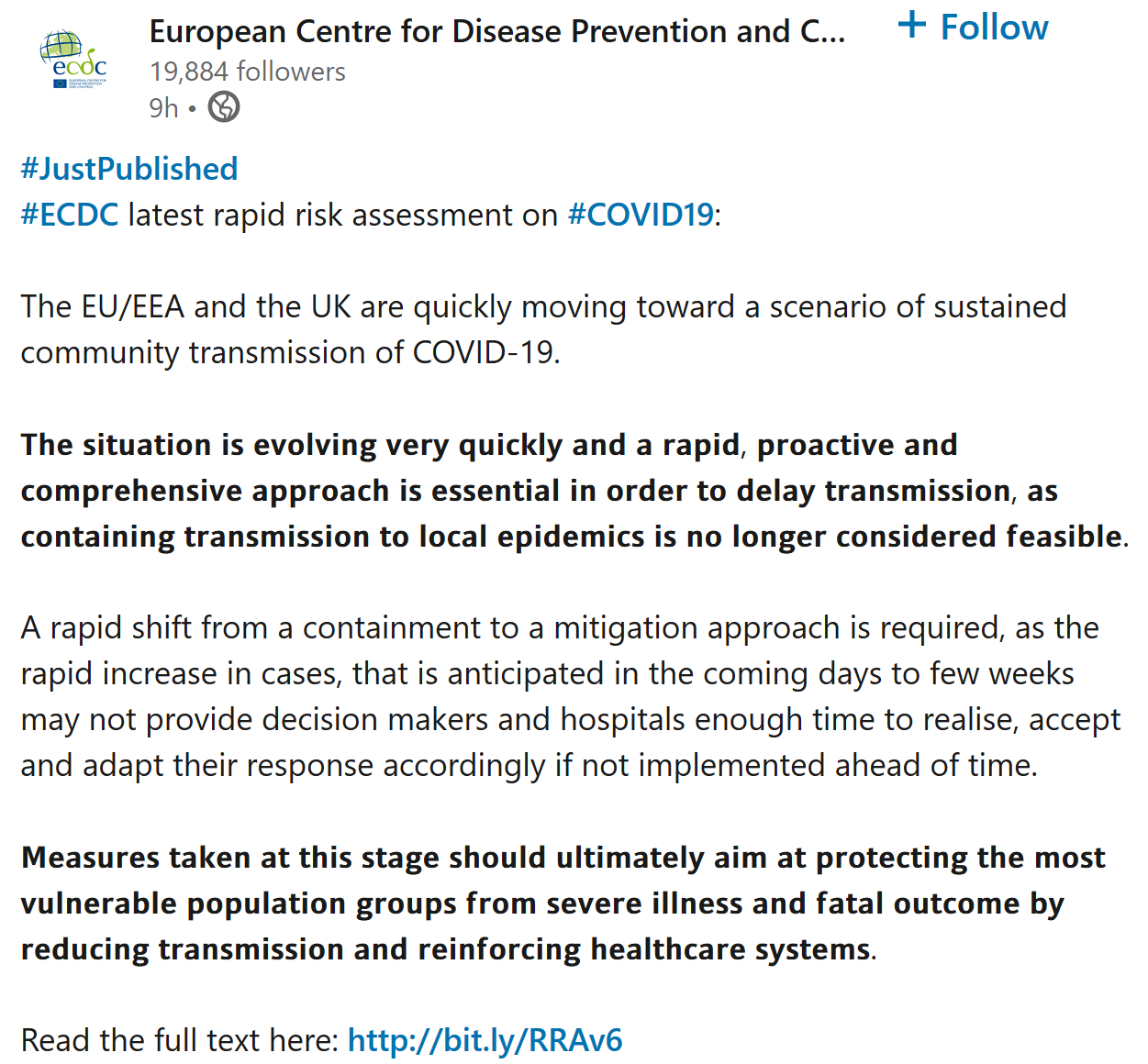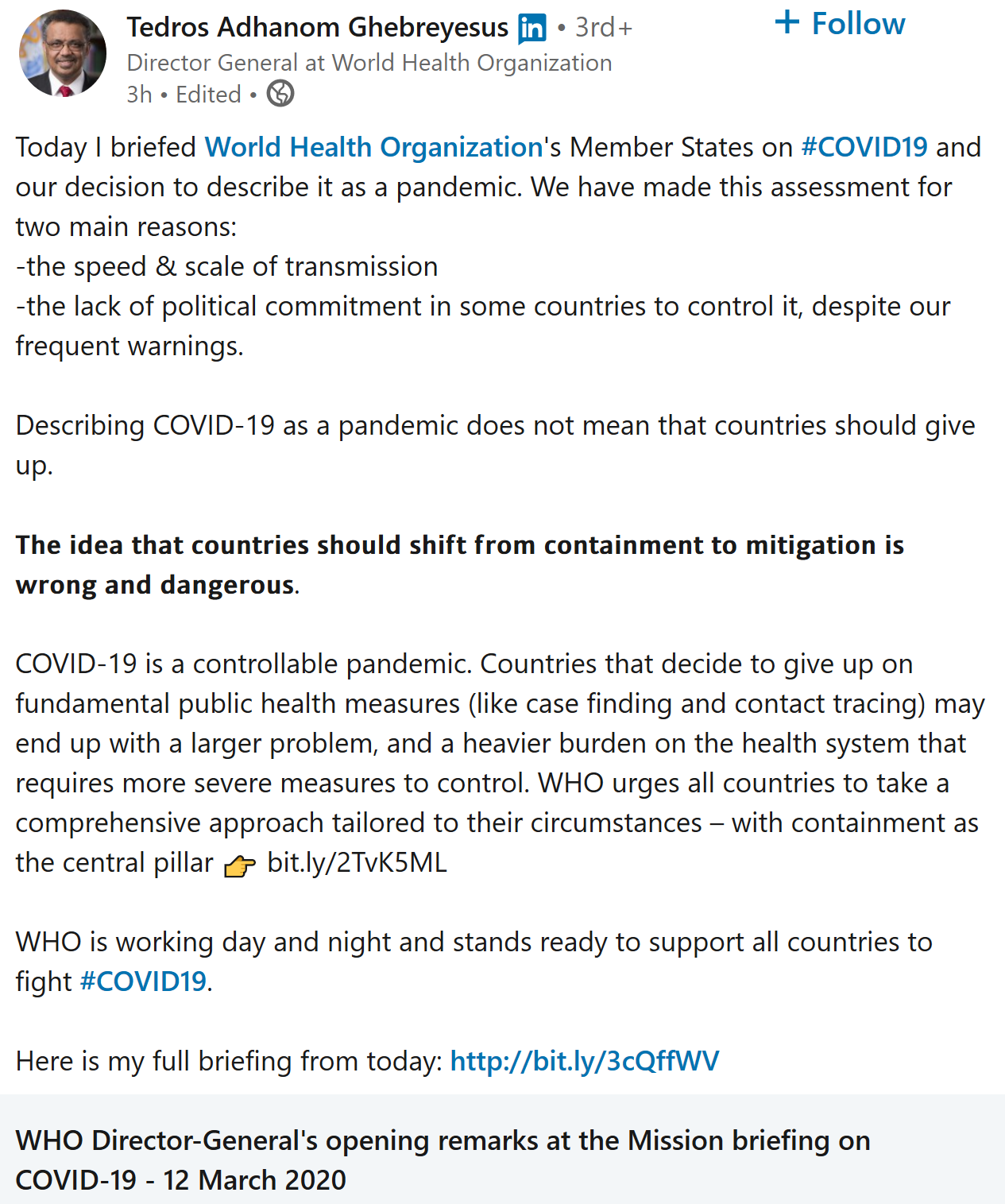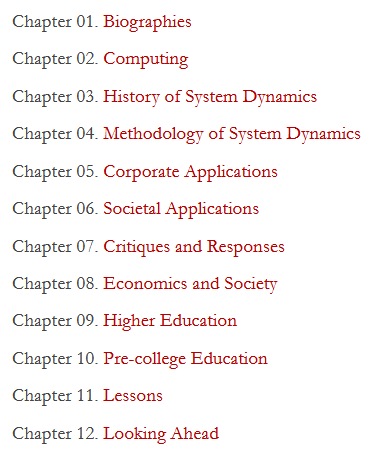In addition to cool, weird visuals of vibrating goo, this video has a nice feedback explanation of how vibrations can stabilize an unstable equilibrium in a fluid or inverted pendulum:
Asides
On Problem Statements
Saras Chung’s plenary commentary at ISDC 2020 reminded me of this nice article:
The Most Underrated Skill in Management
There are few management skills more powerful than the discipline of clearly articulating the problem you seek to solve before jumping into action.
BY NELSON P. REPENNING, DON KIEFFER, AND TODD ASTOR
A good problem statement has five basic elements:
• It references something the organization cares about and connects that element to a clear and specific goal;
• it contains a clear articulation of the gap between the current state and the goal;
• the key variables — the target, the current state, and the gap — are quantifiable;
• it is as neutral as possible concerning possible diagnoses or solutions; and
• it is sufficiently small in scope that you can tackle it quickly.
Excel, lost in the cloud
Excel is rapidly becoming unusable as Microsoft tries to shift everyone into the OneDrive/Sharepoint cloud. Here’s a very simple equation from a population model:
='https://ventanasystems-my.sharepoint.com/personal/vrbo_onmicrosoft_com/Documents/_Mkt/lxpgi/Model/Model/[Cohort Model Natural Increase.xlsx]Boston'!S135+'https://ventanasystems-my.sharepoint.com/personal/vrbo_onmicrosoft_com/Documents/_Mkt/lxpgi/Model/Model/[Cohort Model Immigration.xlsx]Boston'!S119+('https://ventanasystems-my.sharepoint.com/personal/vrbo_onmicrosoft_com/Documents/_Mkt/lxpgi/Model/Model/[Cohort Model NPR.xlsx]Boston'!S119-'https://ventanasystems-my.sharepoint.com/personal/vrbo_onmicrosoft_com/Documents/_Mkt/lxpgi/Model/Model/[Cohort Model.xlsx]Boston'!R119
URLs as equation terms? What were they thinking? This is an interface choice that makes things easy for programmers, and impossible for users.
A coronavirus prediction you can bank on
How many cases will there be on June 1? Beats me. But there’s one thing I’m sure of.
My confidence bounds on future behavior of the epidemic are still pretty wide. While there’s good reason to be optimistic about a lot of locations, there are also big uncertainties looming. No matter how things shake out, I’m confident in this:
The antiscience crowd will be out in force. They’ll cherry-pick the early model projections of an uncontrolled epidemic, and use that to claim that modelers predicted a catastrophe that didn’t happen, and conclude that there was never a problem. This is the Cassandra’s curse of all successful modeling interventions. (See Nobody Ever Gets Credit for Fixing Problems that Never Happened for a similar situation.)
But it won’t stop there. A lot of people don’t really care what the modelers actually said. They’ll just make stuff up. Just today I saw a comment at the Bozeman Chronicle to the effect of, “if this was as bad as they said, we’d all be dead.” Of course that was never in the cards, or the models, but that doesn’t matter in Dunning Krugerland.
Modelers, be prepared for a lot more of this. I think we need to be thinking more about defensive measures, like forecast archiving and presentation of results only with confidence bounds attached. However, it’s hard to do that and to produce model results at a pace that keeps up with the evolution of the epidemic. That’s something we need more infrastructure for.
Dynamics of Hoarding
“I’m not hoarding, I’m just stocking up before the hoarders get here.”
Behavioral causes of phantom ordering in supply chains
John D. Sterman
Gokhan DoganWhen suppliers are unable to fill orders, delivery delays increase and customers receive less than they desire. Customers often respond by seeking larger safety stocks (hoarding) and by ordering more than they need to meet demand (phantom ordering). Such actions cause still longer delivery times, creating positive feedbacks that intensify scarcity and destabilize supply chains. Hoarding and phantom ordering can be rational when customers compete for limited supply in the presence of uncertainty or capacity constraints. But they may also be behavioral and emotional responses to scarcity. To address this question we extend Croson et al.’s (2014) experimental study with the Beer Distribution Game. Hoarding and phantom ordering are never rational in the experiment because there is no horizontal competition, randomness, or capacity constraint; further, customer demand is constant and participants have common knowledge of that fact. Nevertheless 22% of participants place orders more than 25 times greater than the known, constant demand. We generalize the ordering heuristic used in prior research to include the possibility of endogenous hoarding and phantom ordering. Estimation results strongly support the hypothesis, with hoarding and phantom ordering particularly strong for the outliers who placed extremely large orders. We discuss psychiatric and neuroanatomical evidence showing that environmental stressors can trigger the impulse to hoard, overwhelming rational decision‐making. We speculate that stressors such as large orders, backlogs or late deliveries trigger hoarding and phantom ordering for some participants even though these behaviors are irrational. We discuss implications for supply chain design and behavioral operations research.
WHO and ECDC at odds, while CDC takes a cruise
ECDC and WHO debate weighty policy questions of the day … containment or mitigation?


CDC, not so much.

FWIW I think the ECDC/WHO disagreement is less than it seems. ECDC is really saying that behavior change has to do the heavy lifting from here out, not that containment should be abandoned altogether.
Three Perspectives on Wuhan
Not quite the good the bad and the ugly, but these are interesting for their contrasts:
The Word from Wuhan
Wang Xiuying – London Review
Inside China’s All-Out War on the Coronavirus
NYT interview with Bruce Aylward, WHO
Personal Essay: Coronavirus Lockdown Is A ‘Living Hell’
Anonymous – NPR
Forrester on Social Dynamics
The System Dynamics Society curated collection of JWF writings on social dynamics is now online (free!):
https://collections.systemdynamics.org/jwf/social-dynamics/

Eroding Environmental Goals
In System Dynamics we typically refer to this as the eroding goals archetype, or the boiled frog syndrome:
Shifting baseline syndrome: causes, consequences, and implications
With ongoing environmental degradation at local, regional, and global scales, people’s accepted thresholds for environmental conditions are continually being lowered. In the absence of past information or experience with historical conditions, members of each new generation accept the situation in which they were raised as being normal. This psychological and sociological phenomenon is termed shifting baseline syndrome (SBS), which is increasingly recognized as one of the fundamental obstacles to addressing a wide range of today’s global environmental issues. Yet our understanding of this phenomenon remains incomplete. We provide an overview of the nature and extent of SBS and propose a conceptual framework for understanding its causes, consequences, and implications. We suggest that there are several self‐reinforcing feedback loops that allow the consequences of SBS to further accelerate SBS through progressive environmental degradation. Such negative implications highlight the urgent need to dedicate considerable effort to preventing and ultimately reversing SBS.
